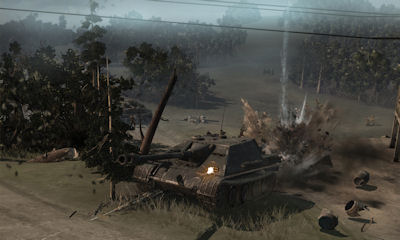Game play
Physics, as in destructible environments, adds an amazing depth and dimension to game play. To be able to knock down fences while driving a car, shoot out lights, or through fences, blow up buildings and get different debris formations each time, or bounce off walls and trees gives game play more realism and fun than the shiniest pixel (and mind you, that statement is coming from Dr Pixel).
So we want physics, like yesterday. The ISVs as usual are the hold up, it’s hard work to build such complex 3D models that have a physics attribute attached to almost every vertex. And if the ISV makes that investment she wants to know that there’s some hardware out there that can exploit it. And, as too many tests have shown, even a quadcore doesn’t do that good a job of it.
Physics, however, is highly vectorizable and as such fits nicely on a GPU architecture. But I as an avid game player am not willing to give up any GPU cycles, especially if I’m trying to run an image hog like Flight Sim X with all atmospherics and terrain turned on while displaying it on my 30-inch 2560 x 1600 monitor. Hell, I need all the GPU I can get just to run Bioshock with everything turned on.
More GPUs
So we need more GPUs, that’s the answer. But as has been shown, GPUs don’t scale well after two. So let’s put in three and use one for physics. And we can do that today easily by sticking in a dual GPU AIB in one slot and a single GPU AIB in the other slot. Or if you’re lucky enough to have an AMD four-slot Spider mobo or a triple play from Nvidia you’ve got the slots and most likely you’ve also got last year’s AIB that you haven’t given to your little brother or put up on eBay yet, so you’re good to go.
But you’re not, not yet anyway, because now we have to get the ISVs to expose the GPU to the physics code. And that, he says after catching his breath, is what the ATI and Havok announcement is all about – convincing the ISVs that not only will there be, but in fact there already is an installed base and that it’s safe to port Havok’s code and expose it to a GPU.
Now we have to get the ISVs to expose the GPU to the physics code
When will we see all this? Maybe, just maybe, this holiday season. In some of the latest DirectX 10 programs that have been built with more flexible architectures it will be possible for the ISVs to put out a patch that will exploit the GPU as a physics accelerator. And Nvidia and the PhysX ISV OEMs will do exactly the same thing.
Also, when these two GPU behemoths officially launch their new chips this month (even though all the web sites seemed to already have launched them) one of the demos you can count on will be physics acceleration.
I for one welcome it and say: “where the hell have you been already?” I want it, I want it now.
Company of Heroes : Opposing Fronts uses Havok














